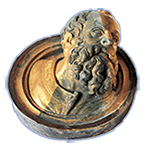Speaker
Description
Metallic Buddhist objects are very common in Asian countries and traditionally used until today. States of the Buddha in different forms and manifestations or Stupas (reliquary shrines) are preserved for sometimes for more than 500 years in Asian temples, or in private collections. It is well-known that these hollow-cast objects made of various copper alloys have been filled during a consecration ritual with sacred and symbolic materials when they were completed. These objects are sealed. Therefore this content is not accessible without opening and thus damaging the image and the spiritual essence. We describe the results of examinations of objects from four collections (2 museums, 2 private) using neutron imaging techniques. It has been found out by suitable radiography tests that the outer metal structure and inner consecration substances is best recognized with neutrons, while X-rays must fail due to their reverse contrast features. We will describe how neutron tomography in particular can be used for a complete analysis of the “metallic cover” and the inner content. We will focus on a few important objects and describe how and why the sacred fillings were done centuries ago. The induvial studies represent only a small part of all samples collected word-wide. Owners of similar metallic statues are invited to study the “inner life” and the technique of the object. Neutron tomography is the only method to provide this knowledge.

